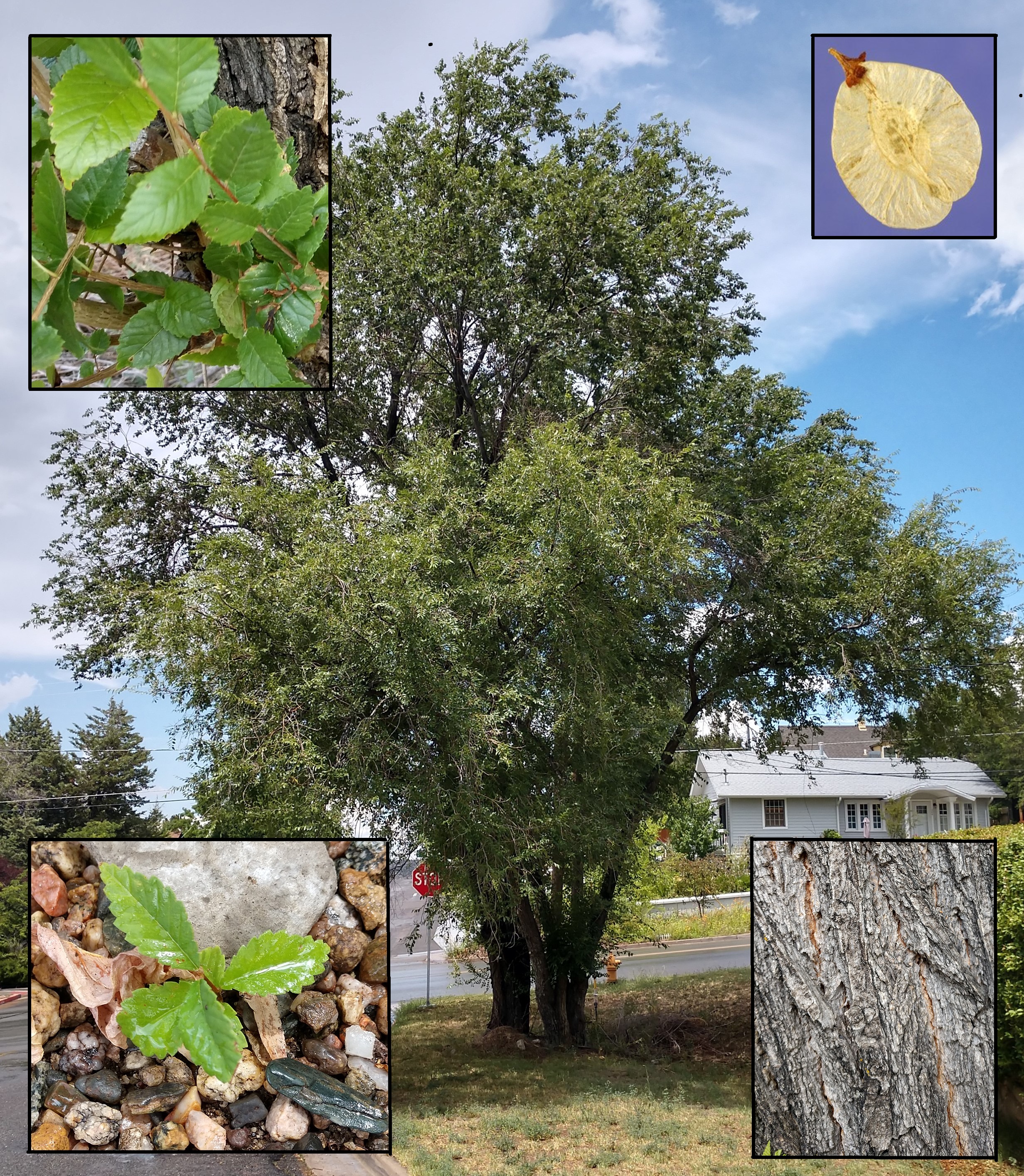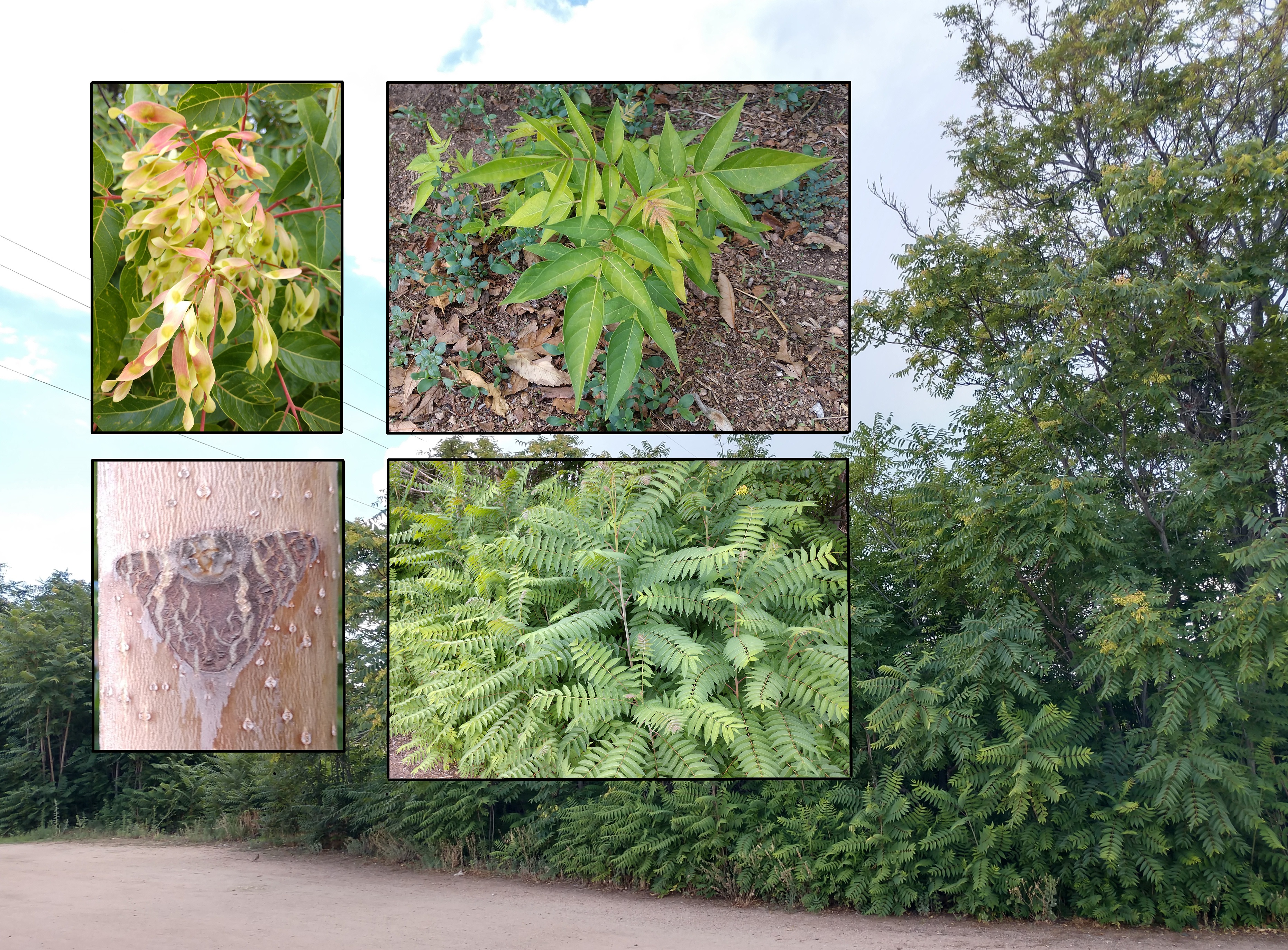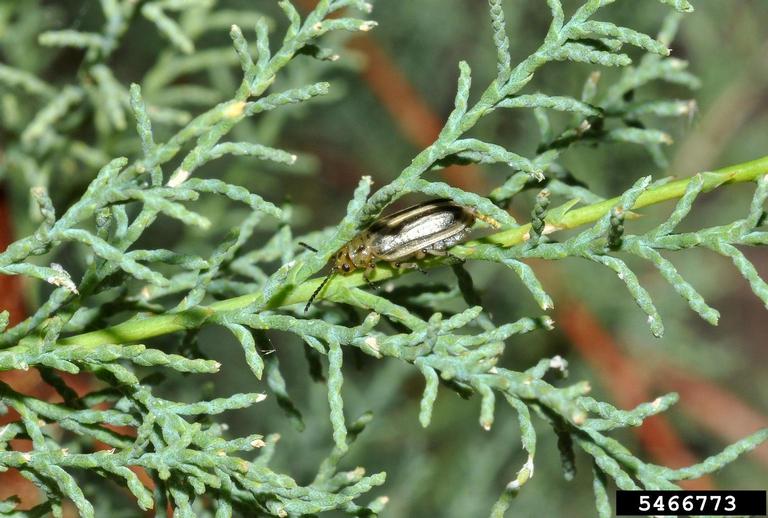 These Are Invasive Trees, So Remove Them! - August 14, 1019 Jeff Schalau, Agent, Agriculture & Natural Resources University of Arizona Cooperative Extension, Yavapai County Sometimes trees behave like weeds and when they do, itís time for action. I have chosen to focus on three weedy trees that threaten wildland and riparian ecosystems of the Verde Valley: Siberian elm, tree-of-heaven, and salt cedar. All are invasive and displace native vegetation. This translates into negative effects on wildlife habitat and forage, recreation, fisheries, and local economies. Chances are you have one or more of these trees on or near your property. If so, it is probably in your best interest to learn to identify, remove, and replace them with desirable, non-invasive species. Siberian elm (Ulmus pumila) is a fast-growing, medium-sized tree with an open, round crown of slender, spreading branches. They look similar to American elms and are native to northern China, Manchuria, eastern Siberia, and Korea. When mature, it generally measures 50-70 feet tall with a spread equal to three-fourths its height. Its rough bark is gray or brown and moderately furrowed at maturity. The tree flowers in spring before leaves begin to unfold. The winged seeds follow quickly and are disseminated by wind, allowing the species to form thickets of hundreds of seedlings in bare ground. In the spring, Siberian elm seeds blow around like flurries of snow. Seeds germinate readily and seedlings grow rapidly. This tree species is rapidly increasing in Prescott, Dewey, Sedona, and Cottonwood. Iím also finding them in remote areas of National Forest land. Tree-of-heaven (Ailanthus altissima) is a small to medium-sized tree with smooth gray bark. Yavapai County residents may know it as the tree that dominates the Town of Jerome. Leaves are compound with 11-25 leaflets. Tree-of-heaven leaves could be confused with those of sumac, pecan or black walnut, except they are much larger. Flowers occur in panicles at the ends of branches; male flowers produce a strong odor, which has been described as "the smell of burnt peanut butter." The leaves when crushed also produce this distinctive, offensive odor. Tree of heaven also has winged seeds somewhat like those of Siberian elm. One tree-of-heaven can produce up to 350,000 seeds in a year. Established trees also produce numerous suckers from the roots and resprout vigorously from cut stumps and root fragments. Tree-of-heaven also produces a toxin in its bark and leaves. These toxins can accumulate in the soil and will inhibit the growth of other plants (a phenomenon called allelopathy). Saltcedar (Tamarix ramosissima) was introduced from Eurasia in the 1800's as an ornamental and is now wide spread in the western United States. It grows as a shrub or small tree, usually 5 to 20 feet tall. Bark on saplings and small stems is reddish-brown. Saltcedar is deciduous with small, scale-like leaves (similar to juniper) on highly branched slender stems. Flowers are pink to white in spike-like clusters. Under good conditions, it can grow 9-12 feet in a single season. Saltcedar has invaded riparian areas across the southwest. Damage by saltcedar includes the displacement of native cottonwood/willow, seepwillow/baccharis, and other native plant species. Over time, it often forms a pure stand. Saltcedars compete with native plants and invade areas by producing abundant seed, rooting and proliferating from buried stems, and concentrating salt in the leaves, which drop to the ground and inhibit growth of nearby plants. It is established in several locations along the Verde River. In addition, you may have seen recent articles detailing how the tamarisk leaf beetle has recently been found on the Verde River. This beetle was deliberately released in Nevada and Utah as a biocontrol agent to reduce populations of salt cedar. There is more to this story and you may learn more by seeing additional resources linked below. Controlling these species is not easy, but it can be done. Young trees can be dug out and hand pulled. While hand removal may seem the best solution, these become increasingly difficult to kill with age. Mature individuals can be managed by cutting and applying an appropriate herbicide to the cut stump. The University of Arizona Cooperative Extension has a publication outlining this treatment. You may find that publication and other resources below. Consult Cooperative Extension Master Gardeners for information about non-invasive trees suitable for Yavapai County. You can follow the Backyard Gardener on Twitter Ė use the link on the BYG website. If you have other gardening questions, call or email the Master Gardener help line in the Prescott (928-445-6590/prescottmg@gmail.com) or Camp Verde (928-554-8992/verdevalleymg@gmail.com) and be sure to include your name, address and phone number. Find past Backyard Gardener columns or provide feedback at the Backyard Gardener web site: http://cals.arizona.edu/yavapai/anr/hort/byg/. Photos  Siberian elm (Ulmus pumila) with close-ups of leaves (upper left), seed (upper right), bark (lower right), and seedling (lower left) (photos by Jeff Schalau, University of Arizona).
Siberian elm (Ulmus pumila) with close-ups of leaves (upper left), seed (upper right), bark (lower right), and seedling (lower left) (photos by Jeff Schalau, University of Arizona). Tree of heaven (Ailanthus altissima) with close-ups of seeds (upper left), sapling (upper right), leaves (lower right), and leaf scar and bark of a young tree (photos by Jeff Schalau, University of Arizona).
Tree of heaven (Ailanthus altissima) with close-ups of seeds (upper left), sapling (upper right), leaves (lower right), and leaf scar and bark of a young tree (photos by Jeff Schalau, University of Arizona). Adult tamarisk leaf beetle (Dirhabda sp.) on salt cedar, near Florence CO (Tamarix ramosissima, William M. Ciesla, Forest Health Management International, Bugwood.org).
Adult tamarisk leaf beetle (Dirhabda sp.) on salt cedar, near Florence CO (Tamarix ramosissima, William M. Ciesla, Forest Health Management International, Bugwood.org).Additional Resources Field Guide for Managing Tree-of-heaven in the Southwest, USDA Forest Service www.fs.usda.gov/Internet/FSE_DOCUMENTS/stelprdb5410131.pdf Siberian Elm, Utah State University Extension utahpests.usu.edu/ipm/ornamental-pest-guide/weeds/w_siberian-elm Saltcedar, Utah State University Extension extension.usu.edu/rangeplants/shrubs-and-trees/Saltcedar Tamarisk Tree-Eating Beetles Evolve Heat-Proof Abilities, Continue Their March Across The Southwest, Colorado Public Radio www.cpr.org/2019/07/26/tamarisk-tree-eating-beetles-evolve-heat-proof-abilities-continue-their-march-across-the-southwest/ Cut Stump Application of Herbicides to Manage Woody Vegetation, University of Arizona Cooperative Extension https://extension.arizona.edu/sites/extension.arizona.edu/files/pubs/az1401.pdf |